Sarajevo, a Soulful Sojourn!
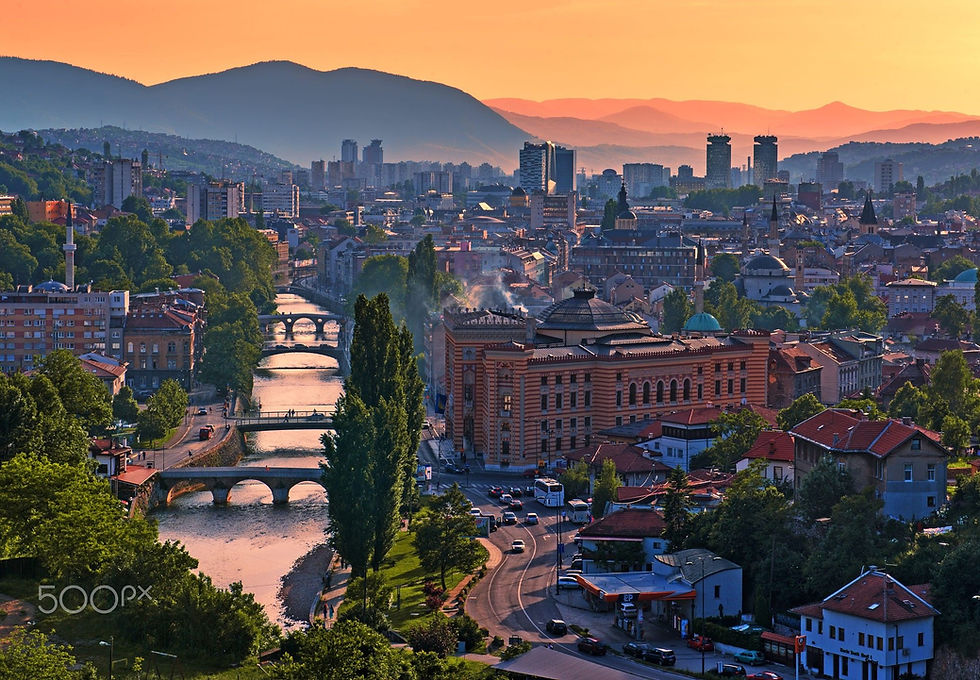
Image courtesy : Youssef Jheir (Pinterest)
A true Balkan country with hills and mountains all around, Bosnia & Herzegovina has a landscape that’s 24% hills, 42% mountains, 29% karst region and 5% lowlands. Forests, rivers, mountains, meadows, and beautiful tiny villages.
Revisiting the hilarious moment just before reaching Sarajevo, the capital of Bosnia & Herzegovina. We found ourselves driving through the winding mountainous roads with rocky mountains on one side and a beautiful river flowing carelessly on the other side of the road and mountains again on the other side of the river.
Busy giving a 360 degree look so as to not miss out the tiniest fragment of this beauty, suddenly saw a small board announcing SARAJEVO 3 minutes! My hubby exclaimed, “Just 3 minutes, can’t see S of Sarajevo yet!” And before we could stop laughing about it, and before we knew it, we were there! There it was, the intriguing SARAJEVO, tucked in the folds of the Dinaric Alps.
SARAJEVO, my love!
Sarajevo was our first destination in Bosnia & Herzegovina. Sarajevo has always garnered attention and a whole lot of affection. There is something special about the place that can’t be expressed in words. Just that it has the power to touch your soul, is what I felt. And whoever visits it, can feel it.
Sarajevo is nothing less than love and Bosniaks are the warmest of people I have ever met in my life, I can literally vouch for it.
The whole world was heartbroken during the Bosnian war, watching the kind of evil that was unleashed on Sarajevo, their beloved city. But that lies in the past now, the city has risen from the ashes of its past like a phoenix and oh what a sight to behold!
Streets of sarajevo. Click to see more pictures.
The City
Sarajevo is a beautiful city located in the Sarajevo valley, in the middle of the Dinaric Alps. Yes, it is surrounded by mountains from all around, no wonder we were still in the mountains when the city showed up suddenly.
The city is developed within a hilly terrain; there are many steeply inclined streets and residences that seem to perch on the hillsides. The Miljacka River passes through the centre of the city. The city is a perfect example of a potpourri of different cultures, where the East meets the West. In one simple word, the city is 'charming'. For us, it was love at first sight.
Sarajevo is the political, financial, social and cultural centre of Bosnia and Herzegovina and a prominent centre of culture in the Balkans. Due to its long history of religious and cultural diversity, Sarajevo is sometimes called the "Jerusalem of Europe" or "Jerusalem of the Balkans". It is one of a few major European cities to have a mosque, a Catholic church, an Eastern Orthodox church, and a synagogue within the same neighbourhood.
Glimpses of Sarajevo | Image courtesy : personal & online sources
History
The modern city of Sarajevo arose in the 15th century as an Ottoman stronghold when the latter empire extended into Europe.
In 1885, it was the first city in Europe and the second city in the world to have a full-time electric tram network running through the city, following San Francisco.
In 1914, Sarajevo was the site of the assassination of Archduke Franz Ferdinand, a murder that finally led to World War I. This resulted in the end of Austro-Hungarian rule in Bosnia and the creation of the multicultural Kingdom of Yugoslavia in the Balkan region.
In 1984, Sarajevo hosted the 1984 Winter Olympics, which marked a prosperous era for the city.
But the glory was reduced to ashes with the start of the Yugoslav Wars when the city suffered the longest siege of a capital city in the history of modern warfare, for a total of 1,425 days, from April 1992 to February 1996, during the Bosnian War, which is over and past now.
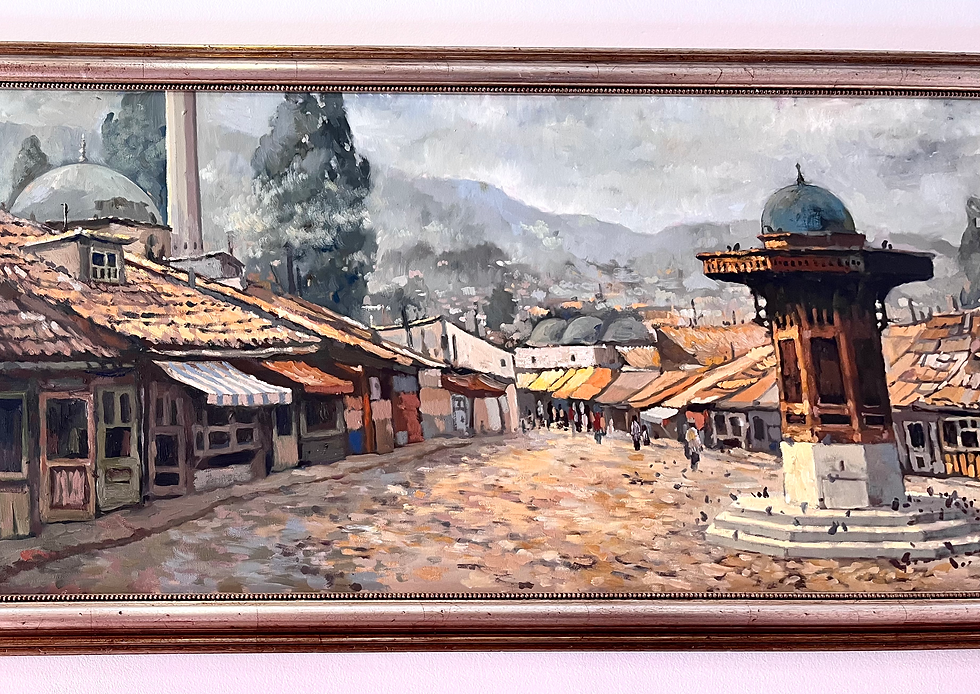
Baščaršija Square in the bygone era!
The travel guide series Lonely Planet ranked Sarajevo as the 43rd best city in the world. Sarajevo was the European Capital of Culture in 2014. It was selected to host the European Youth Olympic Festival. In addition, in October 2019, Sarajevo was designated as a UNESCO Creative City for having placed culture at the centre of its development strategies.
A lot of credits to the city and totally deserved ones.
People
People are the most loving and warm that I have ever met. There is a unique warmth in the whole city, people being the key reason behind it. You will always be welcomed by smiling faces. Even if language may be a barrier sometimes, that doesn’t stop anyone from expressing warmth and compassion for others. We could just understand each other. I think this is a universal phenomenon everywhere, compassion and kindness is beyond the boundaries and barriers of language.
Heritage
Sarajevo boasts of architectural gems of every empire that ruled the country Bosnia, from Ottoman to Austro Hungarian to neo European architecture. The beauty of the city lies in the conglomeration of cultures, the city always was the finest example of multi-cultural population living peacefully with each other till the 90s arrived.
Art & Crafts
The glitter and shine of Sarajevo lies at the heart of the city. And at the centre of the old town lies Baščaršija, the oldest bazaar of Sarajevo and the historical and cultural center of the city. Baščaršija was built in the 15th century. The tiny array of shops on the two sides of the narrow streets of Sarajevo old town, intermingled with innumerable restaurants and cafes, sell beautiful traditional handicrafts made by local artisans. Everything looks so beautiful that making a choice feels like the toughest decision of life. My suggestion is to keep an extra empty bag if you plan to visit Sarajevo or even Mostar. :D
A glimpse of Baščaršija
During its golden age, Baščaršija was not only Sarajevo’s economic center but also the largest trading hub in the Balkans, with approximately 12,000 shops and even trading colonies set up by merchants from Florence, Venice, Dubrovnik. Baščaršija Square has been adorned by Sebilj (a kiosk-shaped public fountain) since 1754. The original structure, which was commissioned by Mehmed Pasha Kukavica, was destroyed in a fire about a century later and then the current Sebilj was erected in 1913, as designed by the architect, Alexander Wittek.
Inspite of the sparkle of Bosnian handmade curios and decorative pieces, one cannot miss the glimmering eyes and lovely smiles greeting you everywhere.
With the liberation of Sarajevo in 1945 there were plans to demolish the market as it would not sync with the modern world but the plans never saw the day of light and the buildings were left standing, thank God for that! If every city looks like an exact replica of the other then what’s the fun of exploring new places! That’s why when cities hold their unique identity it becomes more enticing & inviting for travel lovers.
What to do in Sarajevo?
Walk around the streets of Baščaršija, admire the glitter and glimmer on both the sides of the street, and shop till you drop!
Enjoy traditional Bosnian food and satiate your sweet cravings with the mindboggling Turkish delights in the innumerable restaurants and shops of Sarajevo old town.
Enjoy Bosnian coffee in the most authentic way. Bosnian coffee deserves more than a few words. The way it is served is an experience in itself. Very close to and yet not similar to Turkish coffee, Bosnian coffee is traditionally made in an ibrik or džezva, a small copper pot with a high neck and a long handle. The coffee is served in the ibrik, with a mug, and a pile of sugar cubes and a small jelly candy, on the side! I am not a big fan of black coffee but I was almost living on this one, along with a Bosnian dessert called Kadaif.
Spend some leisurely evenings in the cafes and beautiful pubs on the European side of Sarajevo old town.
Explore Baščaršija and spend some lazy moments near the Sebilj, the pride of Baščaršija. I learnt that there used to be hundreds of sebiljs (kiosk-shaped public fountains) in Sarajevo during the Ottoman era, but today the last one is found on Baščaršija Square, where it serves as a major symbol of the city’s glorious past.
The Sebilj at the Baščaršija Square | Image courtesy : personal & online sources
The sebiljs dispensed free water to passers-by. This sebilj in Baščaršija dates back to the Austro-Hungarian period. The original one, built by Mehmed Pasha Kukavica, was several meters away from where Sebilj now stands, but was knocked down after being damaged during a fire. Alexander Wittek’s design for Baščaršija’s Sebilj was installed in 1913. It underwent renovation before the XIV Winter Olympic Games were held and again after the last war. Well! Long live the Sebilj.
Take a tour of Sarajevo city hall, known as Vijećnica. It was designed in 1891 by the Czech architect Karel Pařík. It was initially the largest and most representative building of the Austro-Hungarian period in Sarajevo and served as the city hall. In 1949, this building was handed over to the National and University Library of Bosnia and Herzegovina and till the time of the 90’s war, the library held 1.5 million volumes and over 155,000 rare books and manuscripts.
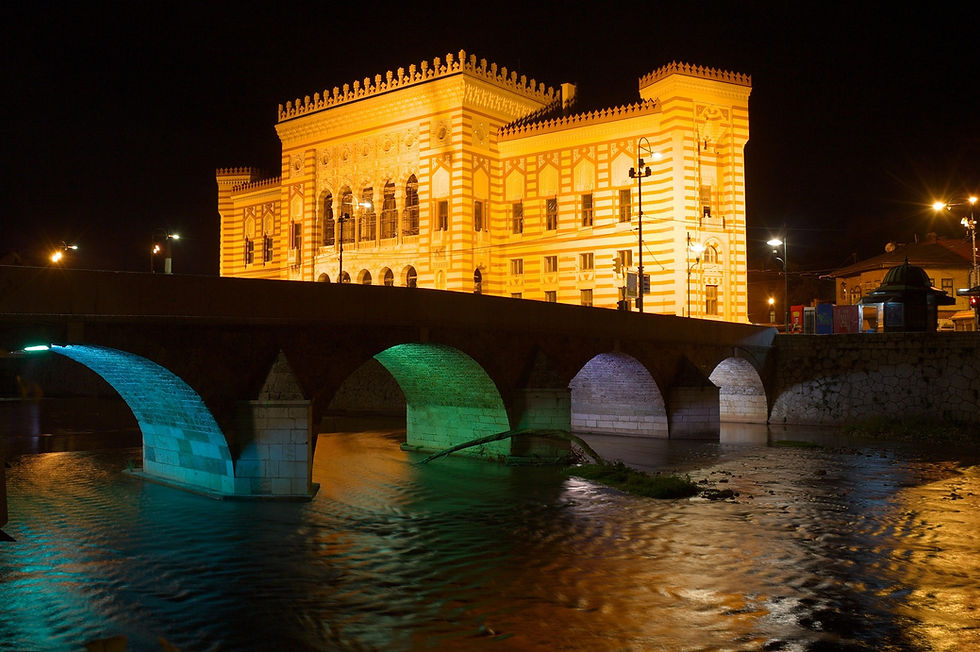
Sarajevo city hall | Image courtesy: Pixabay
Walk on the historical bridges of Sarajevo and get some goosebumps. Let’s talk about the famous Latin Bridge here.
Do you know the story of the origin of WWI? Well, the story of its origin lies in the heart of Sarajevo, at the corner of the same Latin bridge, which was the site of the assassination of Archduke Franz Ferdinand of Austria 1914. This event ultimately led to the outbreak of World War I. Built in the 16th century, the Latin Bridge is one of the oldest Ottoman bridges over the river Miljacka in Sarajevo, Bosnia and Herzegovina.
Take a peaceful stroll by the banks of river Miljacka, spend some relaxing time in the parks along with some Bosnian coffee breaks.
Visit the various museums of Sarajevo, split between history & culture, art & literature, Olympics, and the infamous war, symbolising the resilience of the city and its citizens. Just a word of caution, if you choose to visit the war museums (I personally don’t prefer the word ‘museum’ to be attached with an awful thing like war) please be sure you will come out with a heavy heart. Do it if you are tough inside.
Out of all the war museums, we chose two – Tunnel of Hope and Siege of Sarajevo Museum. These two are almost contradicting to each other. Whereas the Tunnel of Hope has a positive connotation and you come out feeling better rather than melancholic, Siege of Sarajevo Museum can actually put you off for a few hours. It’s a very heart touching experience, with a display of real life stories and the last remnants of everything that can be called life, life before it was ended or maybe it survived the siege of Sarajevo.
Tunnel of Hope was a tunnel constructed between March and June 1993 during the Siege of Sarajevo in the midst of the Bosnian War. This tunnel was the only connection that Sarajevo had with the outside world during those years of war. The tunnel allowed food, war supplies, and humanitarian aid to come into the city, and people to get out. After the war, about 20 meters of the tunnel became part of a museum which contains many items from the time of the Siege of Sarajevo – the longest-running siege of any city in modern history.
About these war museums I strongly fee that ‘museum’ is not the right word. Secondly, such permanent displays should not be used to pass on hatred or feelings of revenge from one generation to another. But at a deeper level people should also know about it so that they develop enough empathy to avoid such devastating events in future.
Check out the source of Bosna river at Vrelo Bosne, a public park and a protected Nature Monument, featuring the system of numerous springs at the foothills of Mount Igman, in the municipality of Ilidža, just on the outskirts of Sarajevo. The place is idylilic with multiple streams and little arched bridges all over. It’s definitely a great source of a quiet escape from city life at a short distance from the city.

Vrelo Bosne
Drive up the surrounding mountains and admire the beauty of the city from the top.
Check out the remnants of the Olympic Games '84. Take the cable car to Trebevic, and reach the bobsled track that was created for the Olympics for a curious look. Now of course it is abandoned.
Just wander around the alleys of Sarajevo aimlessly, just to get a feel of the place.
Check out the various places of worship and get some spiritual peace and calm.
a) Ali Pasha's Mosque
b) Emperor's Mosque
c) Gazi Husrev-beg Mosque
d) Cathedral of the Nativity of the Theotokos
e) Church of the Holy Transfiguration
f) Old Orthodox Church
g) Sacred Heart Cathedral
h) Saint Joseph's Church
i) Sarajevo Synagogue
Sarajevo – Meeting of Cultures
This is a unique concept in Sarajevo. It is one of the rare cities where you can literally walk from one world to another, between different cultures, religions, history, and heritage.
Check the transition in architecture as the video proceeds
Sarajevo has always been the melting point of cultures, of different empires and eras. This point marks the exact location where one can literally step from one empire to another. It takes just one step to move from the Austro-Hungarian to Ottoman Empire, from grand, multi-story structures to small wooden shops, with architecture so distinct that no one can miss this thin line that separates the two cultures, inspite of the constant movement of crowd.
Siege of Sarajevo
A little bit about the siege of Sarajevo now, an event which gives me creeps whenever I think about it. The beautiful view from my hotel window, of the mountains surrounding Sarajevo, gave nightmares to its citizens during the war.
The Siege of Sarajevo was a prolonged blockade of Sarajevo, the capital of Bosnia and Herzegovina, during the Bosnian War. Lasting from 5 April 1992 to 29 February 1996 (1,425 days), it was the longest siege of a capital city in the history of modern warfare.
During this tragic episode in the history of the world, Sarajevo was surrounded from everywhere with a siege force of 13,000 stationed in the surrounding hills. From there they assaulted the city with artillery, tanks, and small arms, every day, every moment! Snipers targeted ordinary citizens while they may be just walking on the road. Humans were killed without any discrimination of religion, gender or age. Sarajevo's population endured up to six months without gas, electricity or water supply during certain stages of the siege.
The siege was eventually lifted following a NATO air campaign which finally ended the violent Bosnian War. Truly a sad episode in the history of mankind and modern times. This is equivalent to being a prisoner in your own city. I just pray and hope that something like this never happens with people from any country, any religion, any ethnicity.
Wish eternal peace to the city and its lovely people. Sending love and my heartfelt good wishes to everyone’s beloved, Sarajevo.
Where to stay?
Definitely stay in the old town. We stayed just at the brink of the old town at Hotel President, quite a cozy and comfortable stay with amazing views and wonderful staff. Not to mention the lip smacking and elaborate breakfast. We are a sucker for good food. :)
How to reach?
Drive down if possible. A road trip in Bosnia & Herzegovina will give you an experience of a lifetime, with magical views all around. Otherwise, fly down to Sarajevo International Airport.
Food – Stay tuned for this one.... ;)
Ciao Sarajevo!
Reached the end to share my final thoughts. I feel Sarajevo is one place that needs to be experienced by everyone. This place has a soul of its own, which not only illuminates the city from within, but also soothes many living souls with its touch of compassion and love. For me it was love at first sight and now I am waiting to see the glamour of this city during winter. Someday soon!
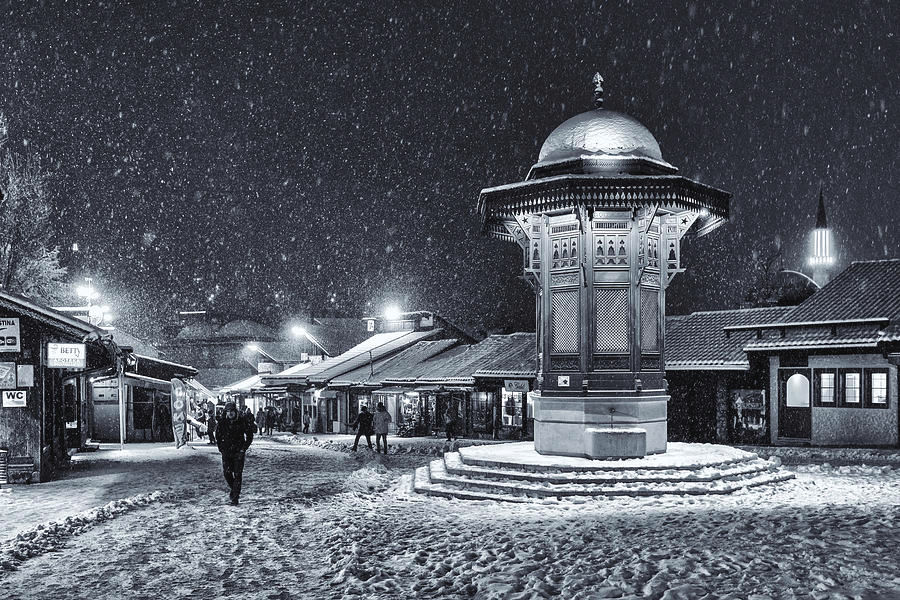
Image courtesy : Online sources
Find the complete itinerary of Bosnia & Herzegovina here : https://www.travogram.com/itinerary/Europe/BosniaandHerzegovina/7-days-Itinerary-Trip-Bosnia-and-Herzegovina/6751





















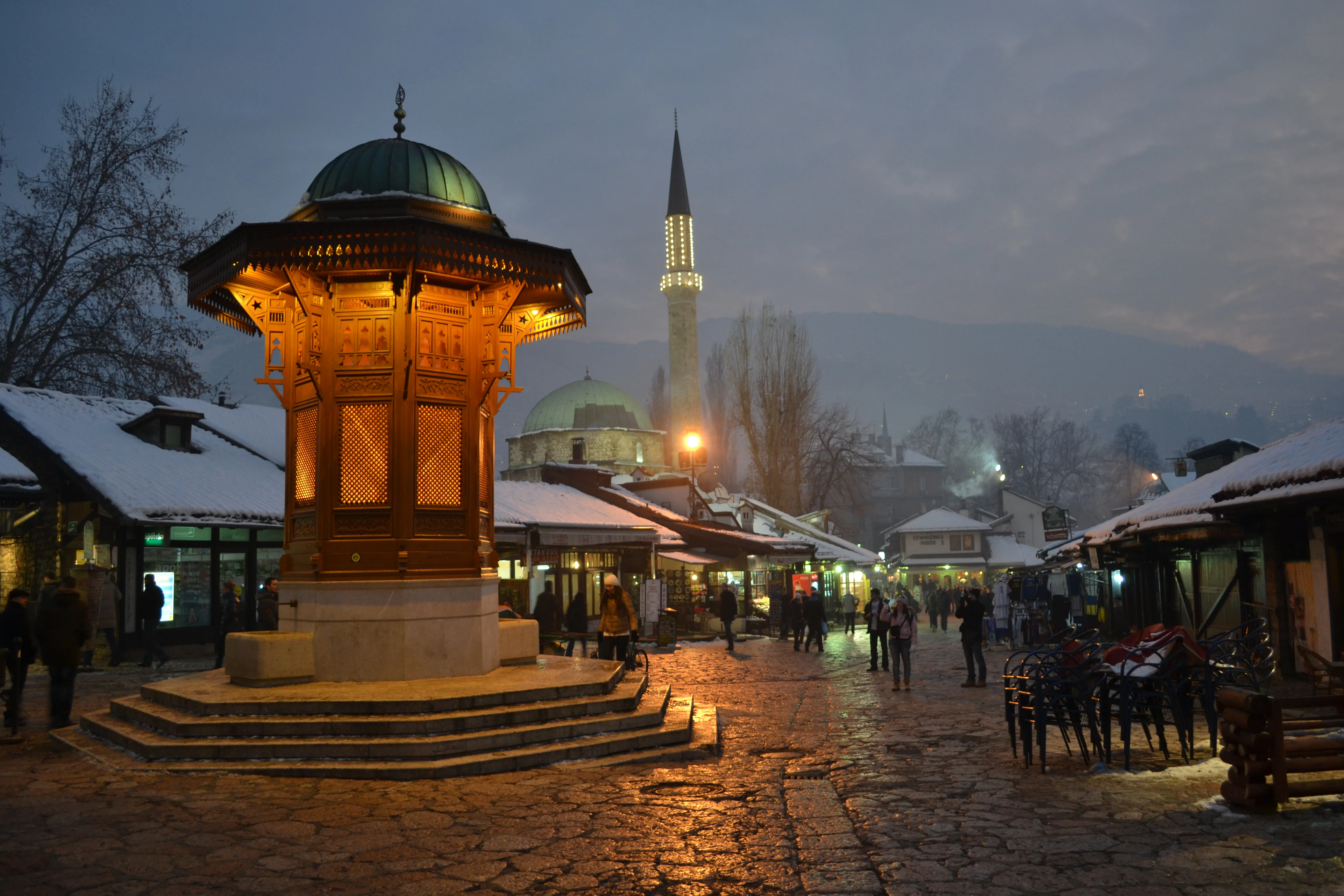












Comments